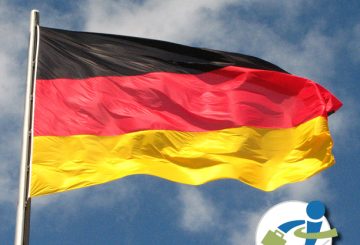
A snapshot of current and future job opportunities the US Midwest including Indianapolis, Milwaukee and St. Louis.
By Mary Anne Thompson, founder and president, GoinGlobal, Inc.
The U.S. Midwest, also known as “America’s heartland” and “America’s breadbasket,” is usually defined as the states of Illinois, Indiana, Iowa, Kansas, Michigan, Minnesota, Missouri, Nebraska, North Dakota, Ohio, South Dakota and Wisconsin. While the word “Midwest” may bring to mind endless cornfields, in reality, the region encompasses a varied cultural landscape, from the small towns and agricultural regions of the south and west to the cosmopolitan, post-industrialized cities of the “Rust Belt” near the Great Lakes.
The people of the Midwest are known for their strong ethic of hard work, accountability and responsibility. While the COVID-19 pandemic has affected many Midwestern cities and the jobs available in those cities, the toughness and resilience indicative of the people persisted. Here is a snapshot of where employment trends stand today in three Midwestern cities.
Indianapolis, Indiana
Indianapolis is a key industrial, commercial and transportation center in the Midwest. The area was hard hit by the 2008 recession but experienced a renaissance before the COVID-19 pandemic hit. Pre-pandemic, Indianapolis had been named the third best city in the nation for jobs. However, like other cities, the Circle City struggled throughout the last year and is still working to recoup its economic losses.
Employment in the area is expected to be strong this year. Analysts predict jobs will grow by more than 3%, adding about 70,000 jobs to the region.
Occupations Expected to See Above-Average Growth through 2028
|
Occupation |
Total annual openings |
|
Office and administrative support |
18,260 |
|
Food preparation and serving jobs |
17,760 |
|
Transportation and material moving |
14,810 |
|
Sales and related |
14,270 |
|
Production |
7,405 |
|
Management |
6,640 |
Source: Indiana Department of Workforce Development
The job market is expected to be upbeat in the near term, according to the latest Manpower Employment Outlook Survey. Among area employers asked about their hiring plans for the coming quarter, 24% plan to increase staff levels.
Over the coming quarter, job prospects are strongest in construction, durable and non-durable goods manufacturing, transportation and utilities, wholesale and retail trade, financial activities, education and health services, leisure and hospitality, and government. Employers in professional and business services plan to decrease staff, while hiring in information and other services is expected to remain the same.
Milwaukee, Wisconsin
Once known as “Brew City, USA,” Milwaukee has traded its hops for mortar boards and helmets, building a reputation for higher education and Harley-Davidson motorcycles. Manufacturing has become a major economic player here, and the city has reclaimed its old title as “Machine Shop of the World.”
Economic growth was slow but steady until the COVID-19 pandemic hit. When the country went into lockdown, employment took a nosedive. In the last year, the economy has improved, but employment levels are still lower than before the pandemic.
The sectors expected to add the most jobs in the metro area by 2028 are education and health services, leisure and hospitality, professional and business services, and other services.
Bolstered by the University of Wisconsin-Milwaukee’s School of Freshwater Sciences and trade group The Water Council, the city is developing an industry cluster around water technologies. The Global Water Center (GWC) provides facilities for academic institutions, water-related companies and accelerator spaces for start-ups. So far, the GWC is home to more than 40 tenant organizations.
Job prospects in the metro area are optimistic in the short term, according to staffing firm Manpower Group. The most recent Manpower Employment Outlook Survey of employers reports that 27% of employers surveyed intend to add staff.
Hiring prospects are most optimistic in construction, durable and non-durable goods manufacturing, transportation and utilities, wholesale and retail trade, financial activities, professional and business services, education and health services, leisure and hospitality, and other services. Hiring in information and government is expected to remain unchanged.
St. Louis, Missouri
The Gateway Arch, an imposing monument that honors the city’s role in opening the American West to settlers and development, dominates the St. Louis skyline. What made this city such an attractive jumping-off point for many was its location — the confluence of the Mississippi, Missouri and Illinois rivers that made it a natural draw for transportation and logistics companies.
Economic growth was steady in St. Louis until the COVID-19 pandemic hit last year. In the last year, the economy has improved but employment levels are still lower than before the pandemic. Industries expected to see the most growth between 2018 and 2028 include:
- Non-store retailers: +71.2%
- Data processing, hosting and related services: +45.7%
- Warehouse and storage: +37%
- Ambulatory health care services: +15.7%
- Hospitals: +15.4%
An active job market is predicted for St. Louis over the next several months, according to Manpower’s Employment Outlook Survey. Of employers surveyed, 28% plan to hire.
According to the survey, job projections are best in construction, durable and non-durable goods manufacturing, wholesale and retail trade, information, professional and business services, education and health services, leisure and hospitality, and government. Employment in transportation and utilities is expected to decline, while financial activities and other services should stay the same.
The region’s fastest growing jobs include:
- Information security analysts
- Nurse practitioners
- Speech-language pathologists
- Health specialties teachers, post-secondary
- Software developers, applications
Conclusion
While the cities of Indianapolis, Milwaukee and St. Louis were all adversely affected by the COVID-19 pandemic, they are rebounding and hiring plans are on the rise. The U.S. Midwest is proving itself to be as resilient as ever, and its people as hard working.
Access to GoinGlobal’s resource database is provided through subscribing institutions. Contact your school’s career center or library for access instructions. Login to your GoinGlobal account here.



